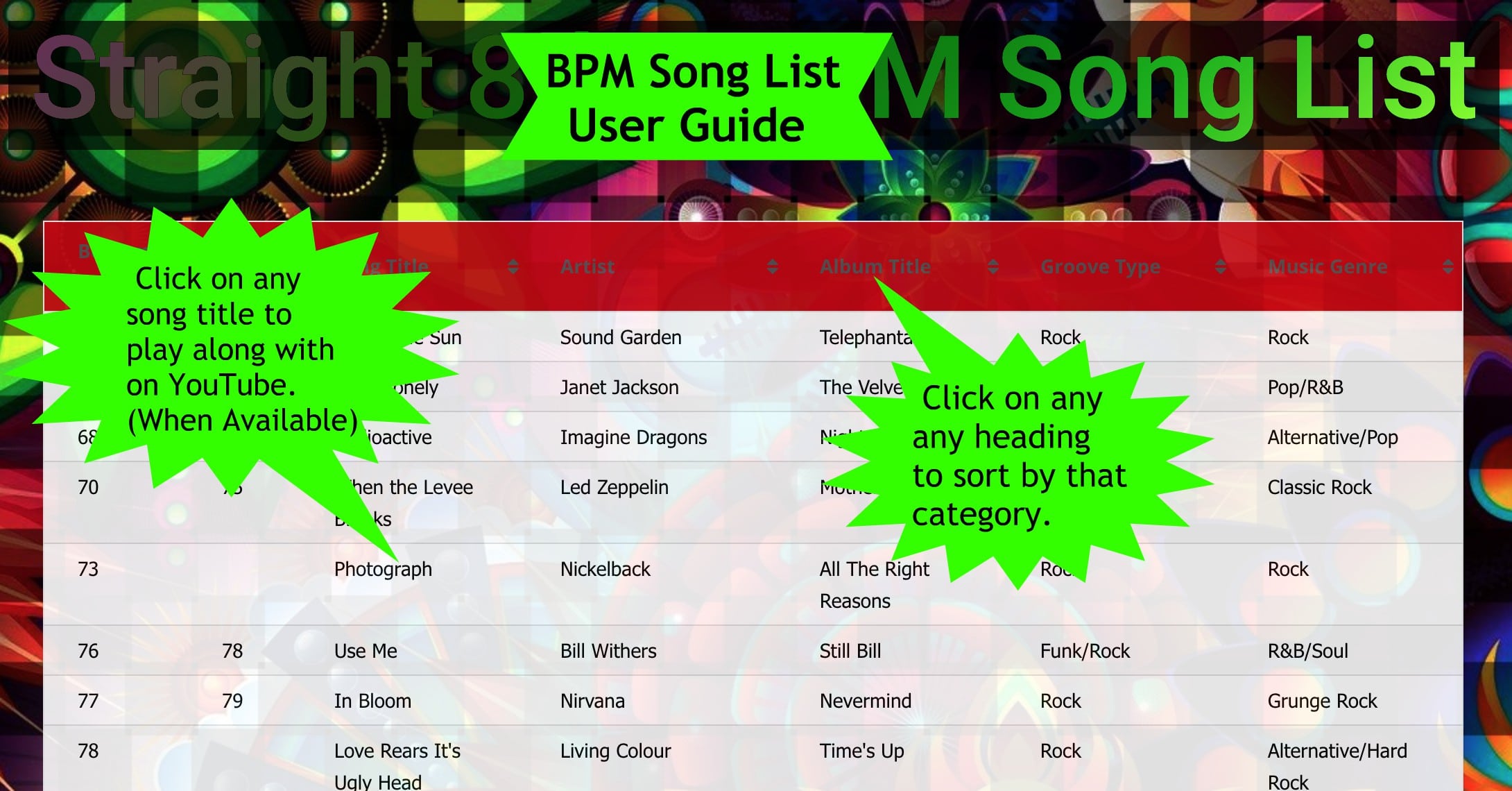BPM SONG LISTS
what is a BPM
Song list?
As drummers, we need to play along with music at least as much as we do with a metronome. Neither can replace the benefits of playing with live musicians, but playing along with great music is the superior substitute! Some of the benefits of playing along with music as opposed to a metronome include (but are not limited to) : more inspiration, development of a better feel/groove, exposure to phrasing/phrases and song form. Creating a list of tunes that corresponds to all tempos and styles that you want to practice (a Beats Per Minute Song List) takes time, and you are welcome to use mine until you complete yours, but I can’t stress how much doing so will enhance your own musical growth, and that of your students as well. If you haven’t purchased Melodic Stick Control yet, read the “Music In, Music Out!” excerpt below from MSC to get some added insight as to the how’s and why’s for eventually creating your own BPM Song List.
What are your favorite BPM Song’s?
I would love to know what songs you like to play along with. I will add them to the Drum Fillosophy community suggestions list, and possibly my own BPM song list as well! All styles of music are welcome, and remember, songs with the most consistent tempo make the best metronome substitutes.
Why Make a BPM
Song List?
“MUSIC IN, MUSIC OUT”
It took me way too many years to realize how valuable it is to play along with music. I love music, but the metronome for many years has been my “go to” time reference for practicing, which really makes no sense since I certainly don’t love the metronome! In the next chapter (General Instructions) I discuss my philosophies regarding metronome practice, but for the moment I would like to cover my thoughts on playing along with music.
The two reasons that I think drummers reach for a metronome before an album are that music can often be too distracting when trying to improve upon certain skills and you may (and should) have an agenda when you sit down to practice – no one wants to waste that valuable practice time finding a song that has the right feel and tempo (BPM) for their session needs. You can rectify these excuses in many instances by doing the following:
1. Pick songs that have a solid pulse – If you are working on your basic jazz independence, then a classic Count Basie or Chet Baker recording would be a better choice than something more complex like a Brad Mehldau Trio recording (amazing to listen to though!)
2. Create a BPM Song List – When you find music with a solid pulse that inspires you, buy that song, figure out the BPM using the tap feature on your metronome of choice, and add that song to your BPM song list.
Take advantage of the technologies available to you. Use the notes feature on your smart phone and immediately take note of any songs that you hear that would make a good addition for your BPM song list (don’t trust that you will remember that song later). Find a good song recognition app for your smart phone and have it ready to identify recordings that will inspire your practice sessions. To get you started, I have included a starter BPM song list of some of my favorite “metronome substitutes”. The more great music that goes in your ears, the more great music that will come out in your playing!
Some of the recordings on my BPM song list vary in tempo from beginning to end (particularly many of the jazz recordings). For these recordings I have indicated a tempo range. Not for the purpose of throwing any artists under the “BPM bus,” but to raise awareness. Great musicians rush and drag at times, and the music is often better because of those organic fluctuations. Being aware of these fluctuations when practicing along with recordings will raise your tempo awareness when complimented with regular metronome practice.
*Note: In some cases, the BPM’s on my list are based on the strength of the pulse, or relationship to the swung 8ths. The actual note value of the BPM may be half or double what I notated. With this in mind, you can cut in half or double the tempo of many recordings to have an expanded tempo range of metronome substitutes.
